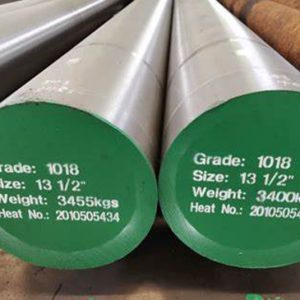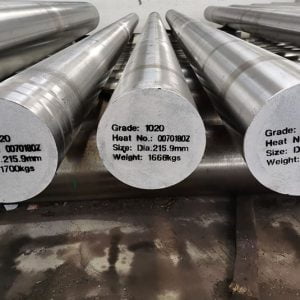Introduction

In the realm of metallurgy, 1045 carbon steel stands as a stalwart material renowned for its versatility and robust properties. Its widespread applications across industries ranging from automotive to construction underscore its significance. In this blog post, we delve into the intrinsic properties of 1045 carbon steel, examining its composition, mechanical attributes, and real-world applications.
Composition of 1045 Carbon Steel
To understand the properties of 1045 carbon steel, it’s crucial to grasp its elemental composition. The alloy primarily consists of iron and carbon, with additional elements such as manganese and sulfur imparting specific characteristics. Below is a table detailing the typical composition of 1045 carbon steel:
| Element | Composition (%) |
|---|---|
| Carbon | 0.42 – 0.50 |
| Manganese | 0.60 – 0.90 |
| Phosphorus | 0.040 max |
| Sulfur | 0.050 max |
Mechanical Properties
In addition to its impressive tensile strength, hardness, and ductility, 1045 carbon steel offers a range of other mechanical properties that contribute to its versatility in various applications:
- Toughness: 1045 steel exhibits good toughness, enabling it to absorb energy and resist fracture under impact or sudden loading conditions. This property makes it suitable for components subjected to dynamic loading, such as gears and shafts in machinery.
- Machinability: Due to its moderate carbon content and relatively low hardenability, 1045 steel is highly machinable. It can be easily turned, milled, drilled, and ground into intricate shapes with minimal tool wear, making it a preferred choice for manufacturing components with complex geometries.
- Weldability: 1045 steel can be welded using conventional welding methods, such as arc welding, MIG welding, and TIG welding, with proper preheating and post-weld heat treatment procedures. This weldability allows for the fabrication of welded structures and assemblies without compromising the material’s mechanical properties.
- Fatigue Resistance: The fatigue resistance of 1045 steel is commendable, making it suitable for applications involving cyclic loading or prolonged stress cycles. Components subjected to repeated loading, such as axles, crankshafts, and connecting rods, benefit from the fatigue strength of 1045 steel.
- Corrosion Resistance: While not inherently corrosion-resistant like stainless steels, 1045 steel can be protected from corrosion through various surface treatments, including plating, painting, or applying protective coatings. Proper maintenance and corrosion prevention measures can extend the service life of 1045 steel components in corrosive environments.
- Dimensional Stability: 1045 steel exhibits good dimensional stability during heat treatment processes, allowing for precise control over the final dimensions and mechanical properties of finished parts. This dimensional stability is crucial for maintaining tight tolerances and ensuring consistent performance in critical applications.
Real-World Applications
The versatile nature of 1045 carbon steel renders it indispensable across various industries. From manufacturing components to structural frameworks, its applications abound. Here are some common implementations:
- Automotive Industry: In automotive engineering, 1045 carbon steel finds widespread use in crankshafts, gears, and axles due to its high strength and fatigue resistance.
- Construction Sector: Within the construction realm, 1045 steel serves as a cornerstone material for manufacturing structural beams, reinforcing bars, and machinery components, owing to its durability and load-bearing capacity.
- Tool Manufacturing: The exceptional hardness and wear resistance of 1045 steel make it a preferred choice for crafting cutting tools, dies, and molds in the tooling industry, enhancing productivity and tool longevity.
Mechanical properties of 1045 carbon steel:

| Mechanical Property | Typical Value |
|---|---|
| Tensile Strength | 565 MPa to 700 MPa |
| Hardness | 60 to 65 HRC |
| Ductility | Satisfactory |
Conclusion
1045 carbon steel emerges as a formidable alloy with a myriad of applications across diverse industries. Its robust mechanical properties, including high tensile strength, hardness, and ductility, underscore its versatility and reliability. Understanding its composition and performance characteristics is paramount for optimizing its utilization in various engineering endeavors.
FAQ
Q:Is 1045 carbon steel weldable?
A:Yes, 1045 carbon steel is weldable using conventional welding techniques such as MIG and TIG welding. However, preheating and post-weld heat treatment may be necessary to minimize the risk of cracking.
Q:What are the corrosion resistance properties of 1045 carbon steel?
A:While 1045 carbon steel offers decent resistance to corrosion in a dry environment, it is susceptible to corrosion in moist or corrosive environments. Proper coatings or plating can enhance its corrosion resistance for specific applications.
Q:Can 1045 carbon steel be heat treated?
A:Yes, 1045 carbon steel is amenable to heat treatment processes such as annealing, normalizing, and quenching and tempering, which can modify its mechanical properties to suit specific application requirements.






